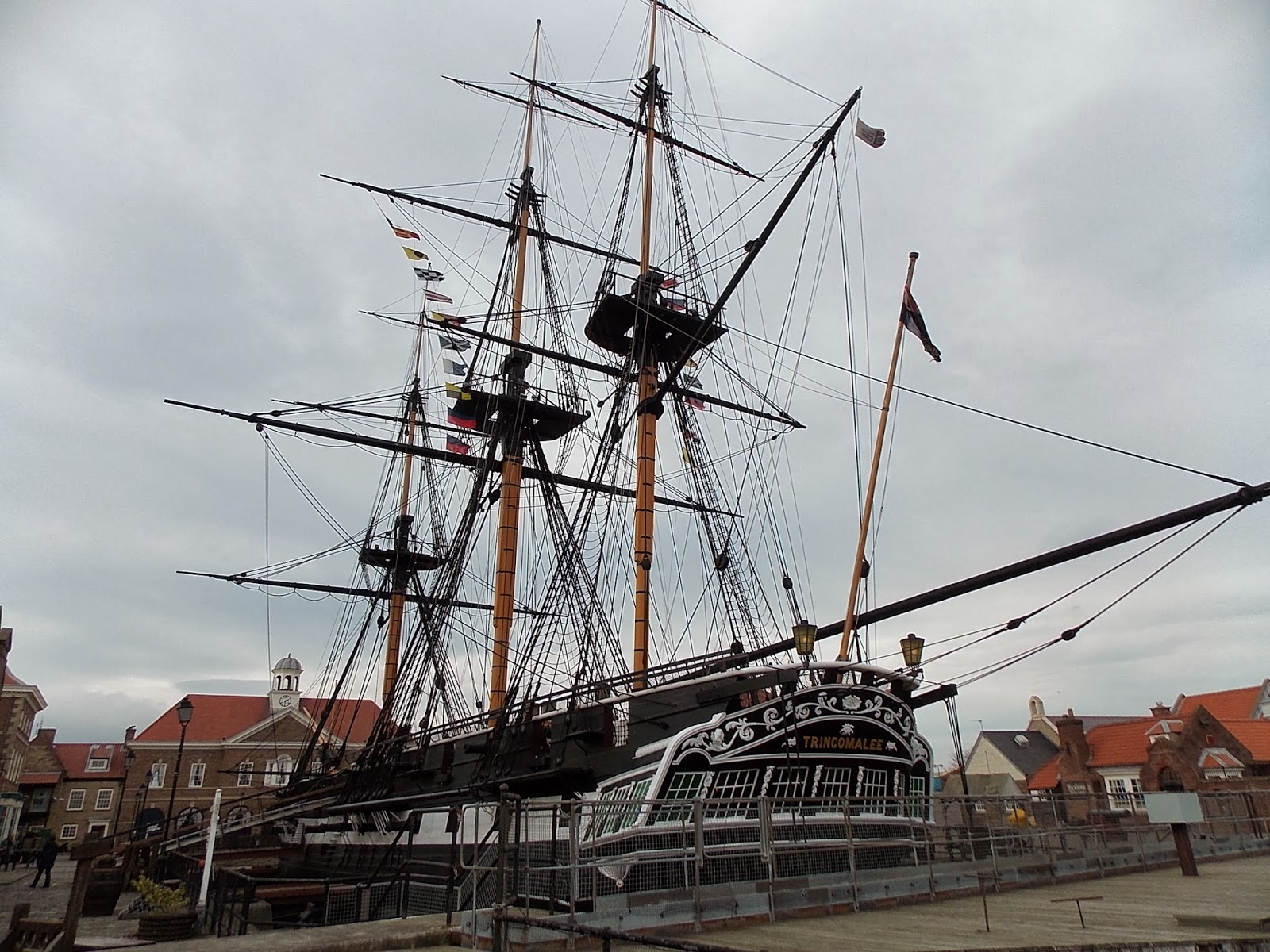Last Saturday I joined three other Franklin expedition aficionados in a very enjoyable visit to Hartlepool's Historic Quay, home of the beautifully restored Leda class frigate HMS Trincomalee.
Trincomalee is in a sense a big sister to Crozier's HMS Terror, both ships were ordered during the War of 1812. While Terror played a memorable role in that conflict, Trinco was not launched until 1817 due to the plans going astray en-route to Bombay where she was to be built.
By happy coincidence, Franklin's HMS Erebus also has a surviving Leda class sister:HMS Unicorn - preserved at Dundee, Scotland. I hope to visit her too some day. Unicorn and Erebus were launched just two years apart, in 1824 and 1826 respectively.
Although these frigates were much bigger than Franklin's ships, a visit to either gives a vivid impression of life on board.
Comparing constructional details of the two frigates we can see that Unicorn has the iron knees introduced during Sir Robert Seppings tenure as Surveyor of the Navy.
 |
| HMS Unicorn 1824 |
Similar features can be seen in the well known engraving of Fitzjames' cabin.
Trincomalee uses an earlier pattern of iron strapped wooden reinforcement.
 |
| HMS Trincomalee 1817 |
If the ice-crushed wreck of either ship were found these details might aid identification.
The key significance of HMS Trincomalee to Franklin buffs is that in 1854, under the command of Captain Wallace Houstoun, she played a supporting role in the search for Franklin by carrying supplies to the West coast of North America for the ships looking for Franklin via Bering's strait. Thus, as well as being the oldest British warship still afloat, she is the sole survivor of the Franklin saga.

.jpg)




There was an obscure human “survivor” of the Franklin Expedition, as revealed in an excerpt of my article, “The Franklin Expedition 50th Anniversary Commemorations: Arctic Veterans and Medals from the Frozen Zone,” (Orders and Medals Research Society Journal, June 2010):
ReplyDelete“On 19 May 1895, it was 50 years since Franklin's "Erebus" and "Terror" departed. The following day, the Council of the Royal Geographical Society held a special meeting to commemorate the event. Some 300 Fellows of the Society and their friends viewed a somber collection of Franklin relics in the museum at Greenwich, which were brought back by search expeditions from northern climes. …
Admiral of the Fleet Sir John Edmund Commerell, VC, GCB (1829-1901) next addressed the room. The whiskered and heavily bemedalled gentleman had come a long way since first donning a naval uniform in 1842, including receiving the Victoria Cross for the Crimean War. In fact, Commerell owed his life to a decision Sir John Franklin made half-a-century before:
“I am called upon by the [RGS] President, as a pure outsider, to give you a little bit of opinion on Arctic Expeditions, because I have never been there, though I have been very near there. I volunteered to go with Sir John Franklin in 1845 [when aged 16 years]. Lieutenant le Visconte [sic] whom I was serving with at that time, and Captain Fitzjames, whom I served with in a ship previously, did the best they could with Sir John to give me a chance of going; but, ladies and gentlemen, I am happy to tell you that I was too young at that time. My experience of over fifty years in the service has taught me that you can look nowhere for better officers, in the ordinary run of duty, and better seamen, than in these Arctic Expeditions. We know very well that it has been an excellent school in every way; an excellent school in hardihood, I may say almost of life, because I believe men who serve for two or three years, and survive an Arctic Expedition, are pretty certain to live, according to the survival of the fittest.””
Glenn, thanks, very moving! -- though the 'tip of the hat' to Darwin at the end seems somehow just a bit sinister! I wonder whether the sailors invalided home from Greenland ever surfaced or spoke in after years?
ReplyDeleteI was wondering just the same thing, Russell.
ReplyDeleteThanks Russell and Andrés. I've never tried to run those four men down, but they would probably appear as supernumeraries [passengers] on the musters of the two ships on which they returned to England. This was nine years prior to the introduction of Continuous Service for three of them (able seaman, armorer and sailmaker), so there's no telling how long they were ashore before they signed on to a naval/merchant ship. As for the Marine, he would have rejoined his battalion.
ReplyDeleteFor the Marine, I meant to write his division.
ReplyDeleteThis comment has been removed by the author.
DeleteI started to trace the subsequent lives of the five returnees but have not yet got very far. The 21st century intervened. But i did get some life history for one of them who I think ended up running a ships' chandlery in Belfast. More work needed.
ReplyDeletehi peter,
ReplyDeletei think your erebus and terror files is superb. i'm an ancestor of frm crozier and have just finished a novel about the franklin expedition based on the latest developments such as terror's discovery. before i start toting it round agents, i would love you to give it a read and see what you thought. if you're interested, my email is angus@o.geek.nz